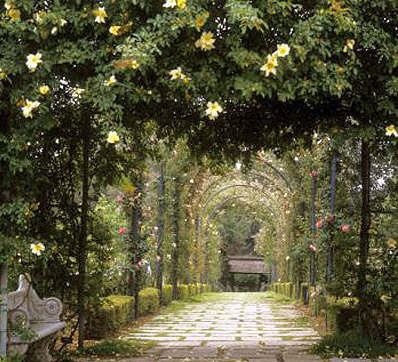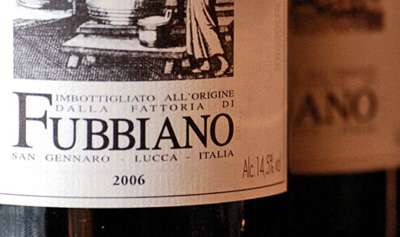An entire wall of my dining room is rather pretentiously covered with paintings of religious subjects.
They belong to the XIX century and represent the poor popular art of that time. The figures were first printed and then painted with watercolours and represent male and female devotional saints with symbols referring to their iconography.
These pictures at the time were mainly hung in bedrooms on the wall behind the bed, and I am sure that those readers who may have bought an old house in the hills around Lucca may have found some of them still hanging there.
The subjects were meant to transmit a feeling of wellbeing and peace. Look for example at that of baby St. John Baptist embracing a sheep with a red ribbon. He is folding his arms around it so sweetly as if it were his cuddly toy. “Guardate in alto, quando andate in giro per Lucca” that is “Look up when you are going around Lucca” my teacher kept saying. It’s a fact that if you go around Lucca with your nose in the air, you can spot here and there many of the most authentic popular and religious art-works of the town.
What you have to look for are the “edicole”. If you search for the word in your dictionary you will read that the word “edicola” in modern language means a newsagent.
But in the language of art, edicola, in English aedicule, means a framed space or niche housing a sacred image and positioned relatively high up on a building. Here in Lucca the subject is mainly the Madonna, the religious figure most loved by Christians.
Often however the Madonna is represented even in the aedicules in an unconventional manner. For example have you seen the one in Via S. Nicolao ? The “Madonna del Soccorso” i.e. Madonna to the Rescue, is angrily represented with a cane in her hand threatening the devil, who finally runs away, so she can rescue the little baby who was just about to be kidnapped. In this case she does not transmit a sense of peace and wellbeing, but of fear and dread. This same picture can also be seen behind the altar in the Church at Montecarlo.
On the contrary in Via dell’Anfiteatro, in Piazza della Grotta we can see an aedicule with a beautiful and elegant Madonna. Hold your breath, she has a Gucci handbag! Of course I’m joking – what seems a bag is in fact a number of devotional necklaces of the time. Many of the aedicoles that you will see in streets in Lucca were done in the XVI century and happily some of them have been recently restored.
This is one of them. In Via del Portico, also close to Via dell’Anfiteatro, there is another one that was meant to thank the Madonna for having saved a little girl, who lived nearby and fell from the fourth floor remaining unhurt. As it says on the plaque hanging at the side, 40 days of indulgence are assured (believe it or not) if you say a prayer next to it.
In Via dell’Angelo Custode, named after the Oratorio dell’ Angelo, there is another aedicule at No.6. The Guardian Angel cannot be clearly seen from the street because of the patina left on the painting by years of weather, but still meets the original religious intentions, if you ask the people living there.
The relationship between religion and popular art has always existed, and since ancestral times men have felt the necessity to use art as a bridge for the two entities to communicate, conveying ideas with the minimum of words and the maximum of impact.
Another characteristic of religious popular art was also to amaze people. But times are different now. Today’s permanent party mood in Lucca, attempting to make people crave just good food and material goods, can act like a mantra on our brain, leaving this hidden aspect of Lucca perhaps neglected. But hopefully to be discovered at least at the end of our visit.
 Florence all lit up for the celebration of Italy’s 150 years of unification! Here you can see Palazzo Vecchio all lit up in green, white and red!
Florence all lit up for the celebration of Italy’s 150 years of unification! Here you can see Palazzo Vecchio all lit up in green, white and red!


